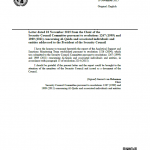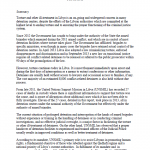
Since 2013, the country has experienced several waves of Libyan returnees, which also formed the backbone of the newly established ISIL in Libya. In addition, the country continues to attract foreign terrorist fighters in significant numbers from North Africa. While currently concentrated in its stronghold in Sirte, ISIL could seek local alliances to expand its territorial control, also entailing the risk of motivating additional foreign terrorist fighters to join the group in Libya.

